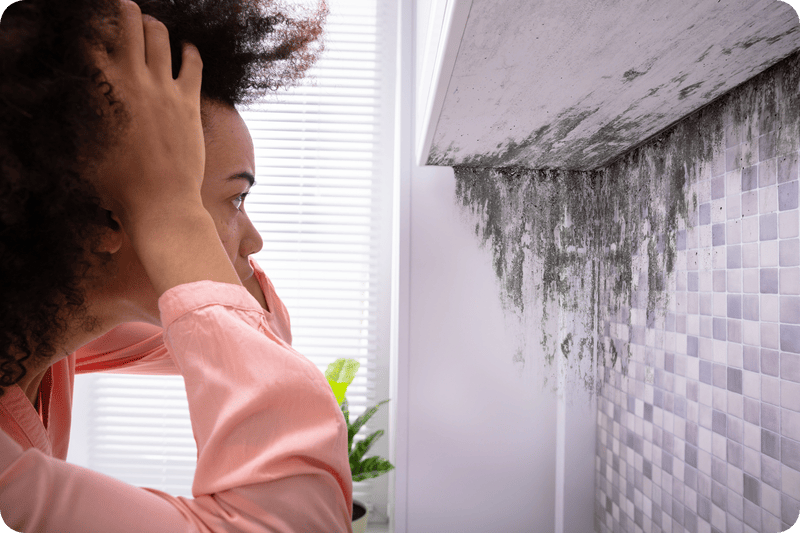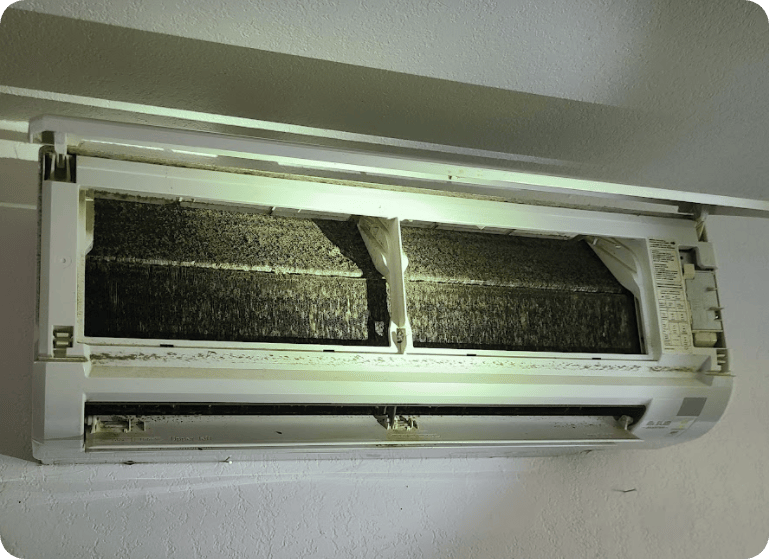The Unexpected Relationship Between Vertigo And Black Mold Exposure
 Sudden dizziness. Problems focusing or keeping your balance. Nausea. Sweating. Sudden hearing loss. The room feels like it’s spinning around you. Could the culprit be mold? The answer may surprise you.
Sudden dizziness. Problems focusing or keeping your balance. Nausea. Sweating. Sudden hearing loss. The room feels like it’s spinning around you. Could the culprit be mold? The answer may surprise you.
The health impacts from mold exposure are real, and they can be severe. But part of the problem is that the symptoms often mimic many other common medical issues. As a result, you or your doctor may not pinpoint the actual cause right away.
And, yes: One of those problems can be vertigo, especially if your symptoms are new and persistent.
Now, that doesn’t mean mold is automatically to blame. After all, other, more common triggers are migraines, inner ear infections or problems, and head injuries.
But, if your sudden onset occurs along with signs of mold infestation, there’s a good chance the two are related.
This article addresses the problem on a few different fronts.
First, we’ll talk about the relationship between mold and vertigo. Then, we’ll talk a little more about the condition itself. Finally, we’ll walk you through how to check for mold in your home and what to do if you find it.
We need to note that we are not medical professionals, and you should talk to your doctor about any health concerns.
But, since our specialty is mini split and heat pump deep cleaning, we run into many mold problems in the Treasure Valley.
As a result, we’ve learned a thing or two about the effects of mold exposure. So, we’re sharing those with you here. If these problems sound familiar to you, and you use a mini split or heat pump to heat and cool part or all of your home in Boise Metro or Valley County, give us a call today.
Can Black Mold Cause Vertigo?
Black mold can cause vertigo in direct and indirect ways. First, exposure to mycotoxins in mold causes dizziness, triggering vertigo. Second, people who are allergic to mold can experience vertigo due to mold exposure.
Related: Can Mold Make You Dizzy?
Specifically, many doctors believe allergies can lead to Meniere’s disease, an inner-ear disorder that causes vertigo. While the exact causes aren’t yet known, allergies, viral infections, and head injuries appear to play significant roles.
And, of course, this is far from the only problem people experience from black mold exposure. Less severe symptoms include rashes, watery eyes, runny noses, and trouble breathing. Other people experience anything from fatigue and nausea to “brain fog” and trouble concentrating.
What Is Vertigo, Exactly?
 Vertigo isn’t a disease itself. Instead, it’s a symptom caused by an underlying condition. For instance, we mentioned Meniere’s Disease as a trigger, along with inner ear infections, migraines, ear infections, and other disorders. It can be a one-time experience or become a chronic problem.
Vertigo isn’t a disease itself. Instead, it’s a symptom caused by an underlying condition. For instance, we mentioned Meniere’s Disease as a trigger, along with inner ear infections, migraines, ear infections, and other disorders. It can be a one-time experience or become a chronic problem.
And that depends largely on what’s causing it for you. In the case of mold exposure, you’re likely to experience it more than if there’s a mold problem at home. We’ll talk more about that again later. But first, let’s go back to the physical symptoms you’re experiencing.
Four Ways To Address Vertigo
The four best ways to begin addressing chronic vertigo episodes are:
- Visit Your Doctor
- Change Your Sleep Habits
- Adjust Your Movements
- Do Specific Exercises
Visit Your Doctor
Your first step, no matter what, is visiting your doctor. You need to identify and hopefully rule out various illnesses that may be at the root of your problem. Your doctor will also help you put together a treatment plan and may prescribe medication for an underlying issue.
Change Your Sleep Habits
Get into a stress-free routine before bed, so you’re relaxed. Sleep on your back to avoid fluid buildup in your ears.
Adjust Your Movements
Try not to stoop down when picking up something. Don’t stretch your neck too far, and turn your head slowly and carefully. These steps avoid irritating your ears or otherwise triggering an episode. And, returning to your sleep habits: Get out of bed carefully and slowly when you wake up.
Do Specific Exercises
You can find many simple movement exercises that help end an episode or prevent future problems.
Now that we’ve dug into those symptoms and how to avoid them, let’s talk again about eliminating specific triggers in your home. Specifically, mold. After all, finding and removing a mold infestation helps with more than just vertigo.
Related: Indoor Air Toxins And Their Symptoms
More Signs Of Mold In Your Home
Identifying a mold problem from physical symptoms is tricky because those symptoms mimic other medical issues. So, here are more things to look for:
Related: Healthy Air At Home Is Crucial For People With Asthma
Damp, Musty Smells
Damp, musty smells indicate a good breeding ground for mold (spores need dark, moist, and warm places to grow). And, the must smell on floors and walls can mean there’s already a problem.
Spots On Walls, Furniture And Clothing
Mold growth can take the form of fluffy or slimy spots that are black or white. You can find them on surfaces all over your home, and even shirts and other clothing items.
Warping Walls
Bulges, peeling wall/paper, and other signs that look like water damage may also be caused by mold growth behind the walls. At the same time, there may be a hidden leak that’s contributing to mold.
Ductless Mini Splits And Mold
Now, we need to address a source of mold and spores buildup that’s becoming more and more common in Idaho: Ductless mini splits in homes and businesses.
For the most part, these heating and cooling systems are excellent: THey provide exceptional comfort while using very little energy. But, the downside is that they are prime breeding grounds for microbial contaminants. And, they’re very tough to clean.
Remember how we mentioned that spores require dark, moist, warm places to grow? Well, you just described the inside of an air handler.
Warm air enters the system, and there’s no light in there. As the unit cools the air, water vapor condenses back into liquid. Most of it drains out from the unit, but there’s still some left in there.
The result? Mold growth that ends up looking like this:

So, how do you get rid of it?
As we said, it’s not easy — even for a professional HVAC tech. They’d have to take apart each unit in your home and scrub each one manually. That’s incredibly time-consuming when you have to get in between each of the small ridges on that coil we showed you there.
That makes it very expensive and not consistently effective. Meanwhile, all that junk you see on the coil makes its way back into the air you breathe every day.
Related: How Often Should A Mini Split Be Cleaned?
Fortunately, there’s a better solution out there: Hydrokleen’s world-renowned heat pump and mini split cleaning process.
Our parent company, HydroKleen Global, spent more than ten years developing and improving the tools, processes, and nontoxic cleaners necessary to flush out all the dirt, toxins, and microbial contaminants from a mini split system in one quick visit.
You can read more about our process in our Learning Library. But the long and short of it is: We’ll show you the progress we’re making during our visit so you can see what’s happening. And, we guarantee it improves your system’s performance and makes the air you breathe feel cleaner.
If not, the cleaning is free.
Mini Split And Heat Pump Cleaning In McCall, ID
HydroKleen208 provides world-renowned mini split and heat pump cleanings to homes and businesses from McCall, ID down through Boise. Our process eradicates mold, bacteria, and other microbial contaminants that make you feel sick at home. Call (208) 779-5596 with questions or to schedule an appointment.
